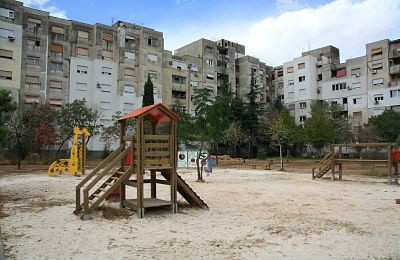The Impact of Hunger in Montenegro

Montenegro is a small Balkan country in Southeastern Europe located between the Adriatic Sea and Serbia. Although hunger in Montenegro is currently not as severe as it is in its surrounding countries, recent data indicates that it still affects the lives of approximately 12.3% of the nation’s population. As such, below is a list of three initiatives that seek to diminish the persistent impact of hunger throughout the country, ranging from state-led reform to international aid.
- Adaptation to Climate Change and Resilience in the Montenegrin Mountain Areas project (GORA). The GORA project aims to relieve climate-related pressures for approximately 12,500 small-scale farmers and rural communities scattered throughout 14 municipalities of northern Montenegro. As of 2024, the International Fund for Agricultural Development (IFAD) has allocated approximately $10 million towards the project, hoping to ease climate-related pressures for around 12,500 households located in northern Montenegro. Given the region’s mountainous ecosystem, northern Montenegro is especially vulnerable to increases in temperature that have the potential to devastate key resources and infrastructure. In particular, flash floods and droughts can cause severe disruptions to harvests and water storage, reducing the availability of food throughout the region. In light of these risks, GORA seeks to enhance ecosystem and smallholder livelihood resilience by promoting climate-resilient practices, increasing income stability and promoting diverse production systems.
- FAO–Montenegro Country Programming Framework (CPF) 2023–2027. In July 2023, the Government of Montenegro and the Food and Agriculture Organization of the United Nations (FAO) announced their partnership to improve the country’s food and agriculture sector, outlining their strategies in the CPF. Intended to induce institutional change, the CPF intends to support the sustainable, inclusive and competitive economic development of Montenegro’s agrifood sector through the enhanced natural resource management of forests and the promotion of new agricultural practices designed to reduce the economy’s impact on the environment. With an estimated 70% of the rural population’s income generated through agricultural means, improvements to farming conditions are vital in ensuring long-term food security for those living in underdeveloped and isolated areas.
- The 2022 Montenegro Nutrition Survey (MONS). MONS was a national cross-sectional survey conducted primarily by The Institute of Public Health of Montenegro and UNICEF to understand the scope of micronutrient deficiencies and nutrition-related noncommunicable diseases in women and children throughout the country. The data collected by the survey identified iron deficiencies and cardiometabolic disease as prevalent among these groups, primarily as a result of insufficient dietary diversity. Breastfeeding and complementary feeding practices were also discovered to be suboptimal, contributing to moderate rates of anemia among both mothers and infants. By providing reliable statistics on various nutritional conditions widespread among women and children, the MONS ultimately functioned as a helpful resource for Montenegrin policymakers seeking to implement nutritional intervention programs for these demographics.
Recognizing its vulnerability to external shocks, Montenegro aims to strengthen its overall stability in the coming years. By engaging in constructive partnerships with the IFAD, FAO and UNICEF, the country has been able to vastly improve its ongoing efforts to reduce hunger in regions and populations still lacking in social welfare. Moving forward, key Montenegrin stakeholders hope to merge sustainable agrifood systems with traditional food cultures to not only reduce the impact of hunger throughout the nation but also promote inclusivity – ensuring that no one is left behind.
– Emma Tennyson, Moon Jung Kim
Photo: Google
Updated: November 25, 2024
